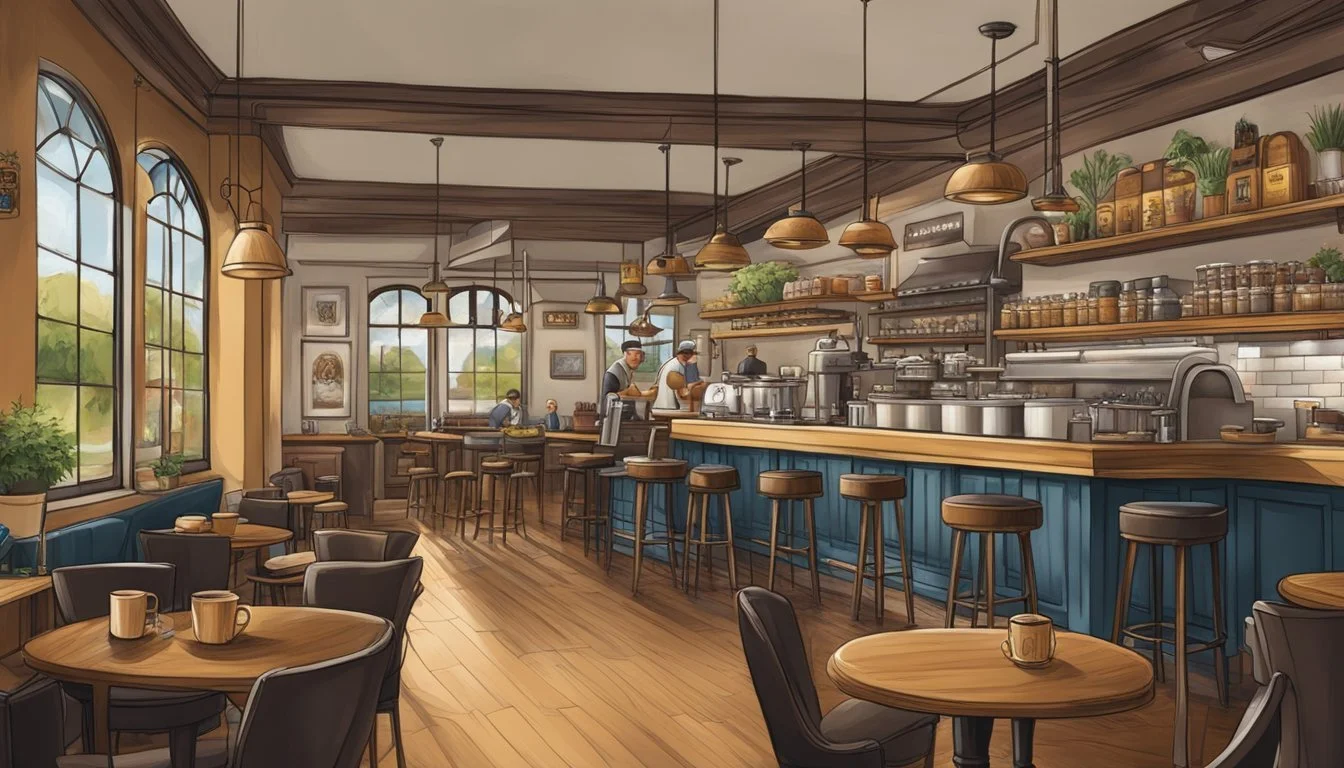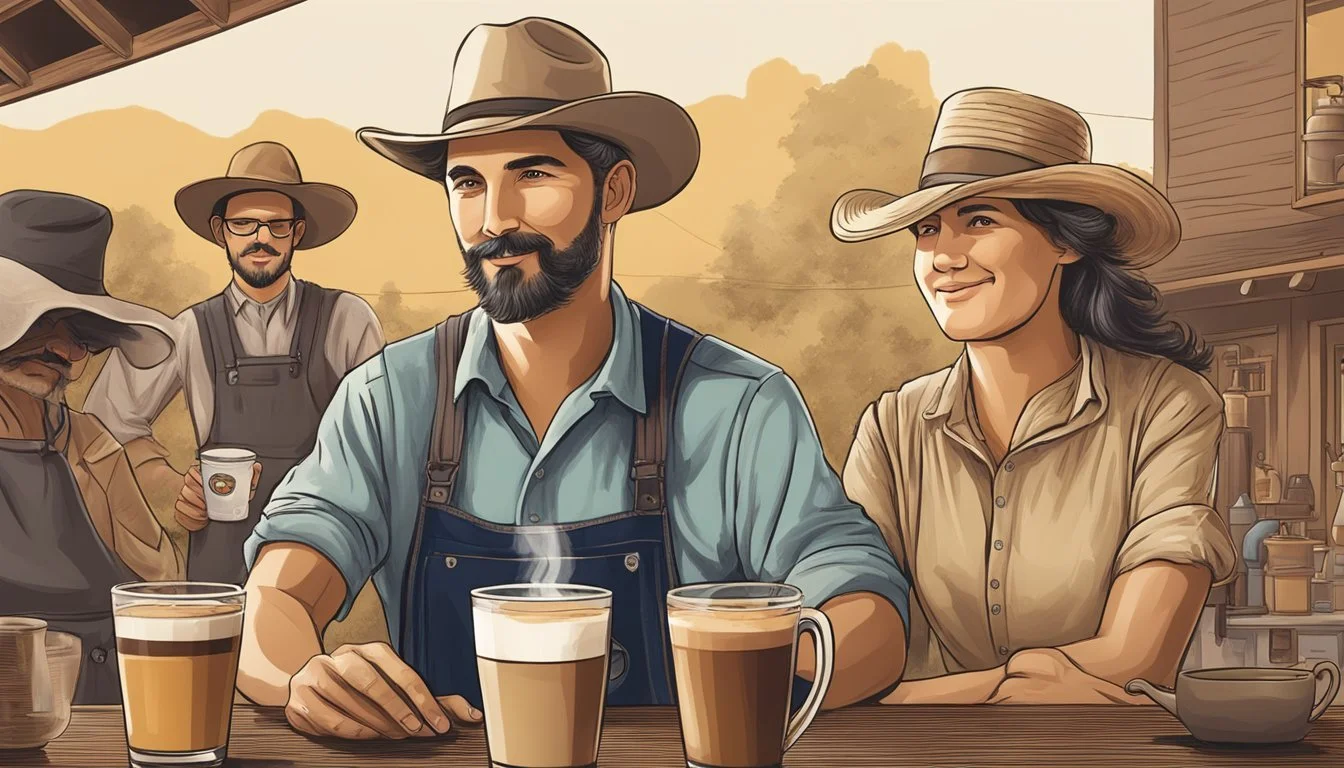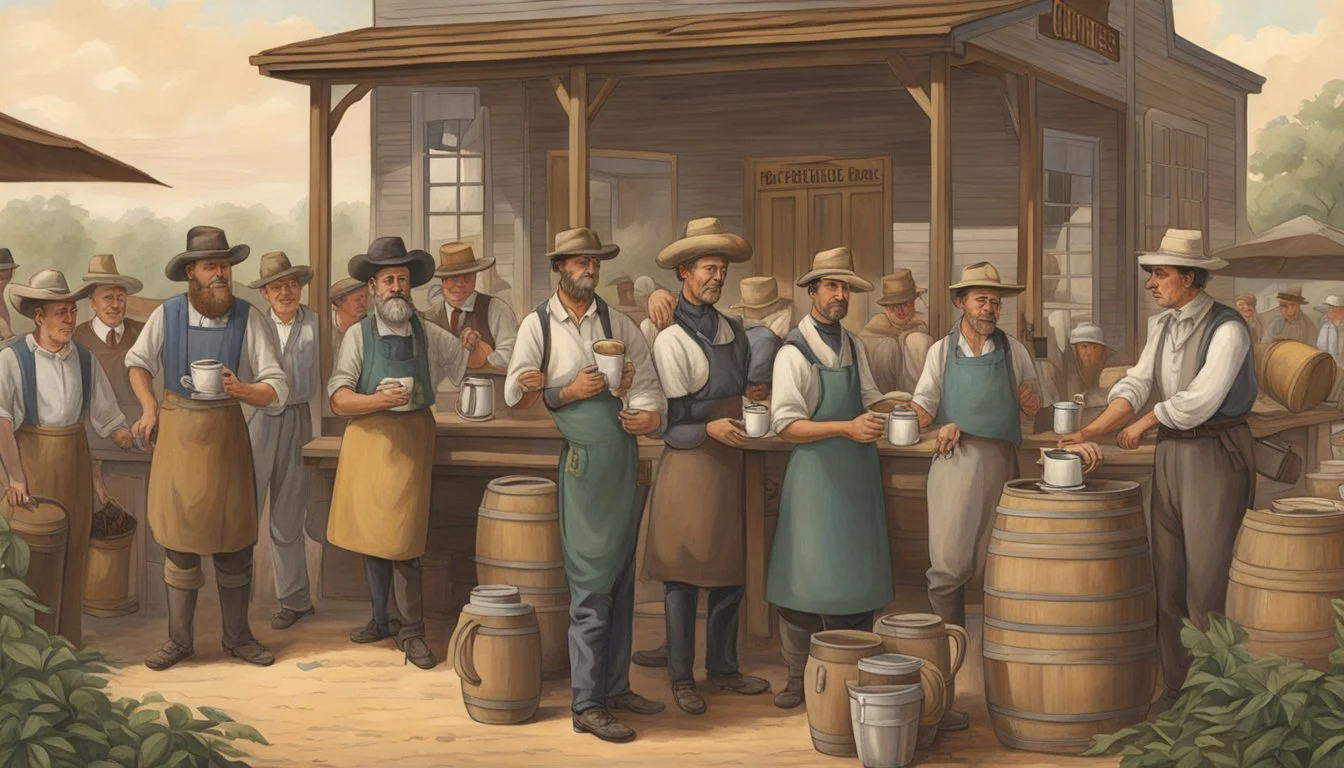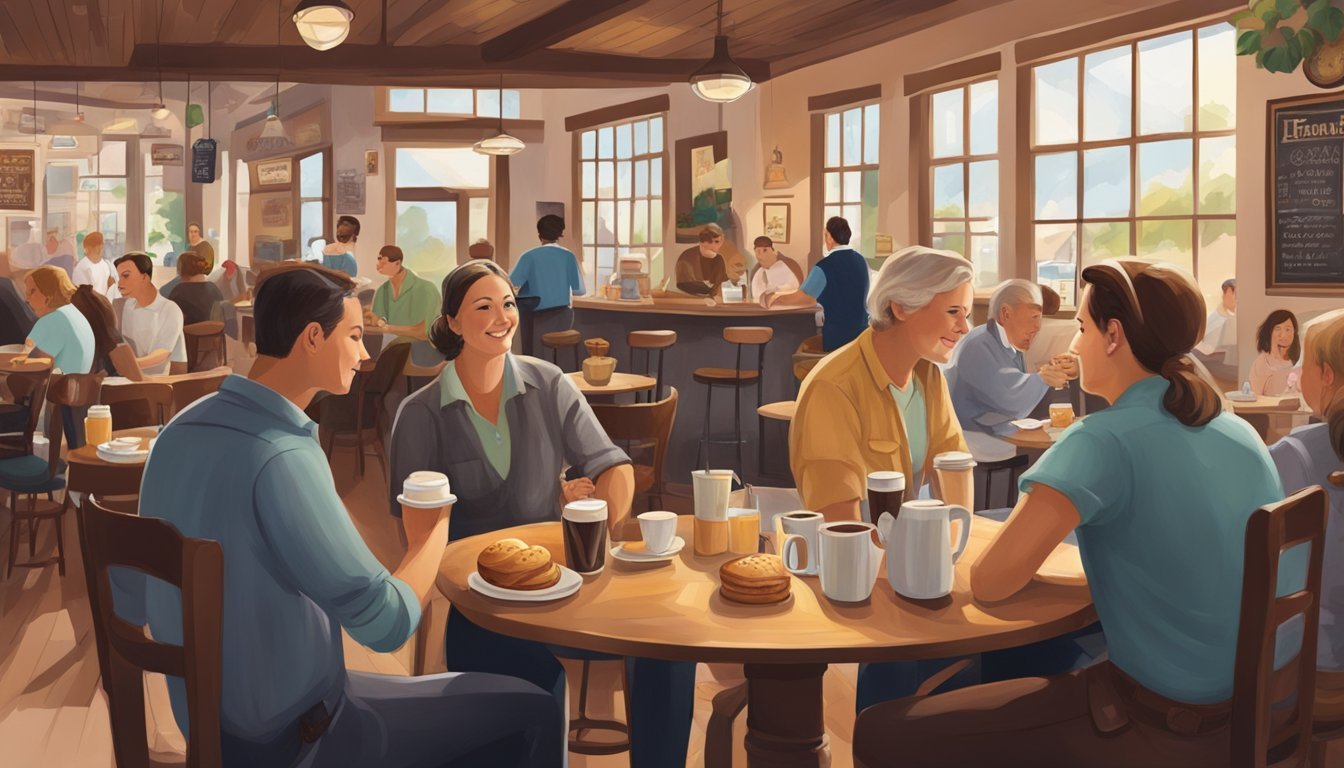The Influence of German Immigrants on Texas Coffee Culture
A Historical Perspective
The influence of German immigrants on Texas culture extends well beyond the obvious architectural and linguistic remnants; it also percolates through less visible aspects, like the state's coffee culture. During the mid-19th century, German settlers brought with them their rich traditions and customs, including their strong coffee brewing practices. In the rural Texas Hill Country, communities such as Fredericksburg and New Braunfels still retain a deep connection to their German heritage, which inevitably includes their coffee traditions.
These early German Texans were instrumental in establishing coffee houses and bakeries that served traditional German pastries accompanied by robust coffee—a tradition that persists in the state to this day. The integration of German coffee customs into Texan society was a gradual process that reflected the wider assimilation of German immigrants into American life. Their emphasis on socializing over a carefully crafted cup of coffee influenced local Texan coffee culture, leading to a unique blend of flavors and communal experiences.
This merging of German and Texan coffee traditions has evolved over time, resulting in a coffee scene in Texas that is both diverse and rich with history. Exploring these coffee practices offers a glimpse into the enduring legacy of German culture in Texas, showcasing how these immigrant influences have shaped the state's culinary habits and social interactions.
Historical Context of German Immigration to Texas
The influx of German immigrants profoundly influenced the socio-cultural fabric of Texas, especially felt through early settlements, dedicated immigration societies like the Adelsverein, and distinctive chain migration trends in the 19th century.
Early Settlements and Founding Figures
In the 1830s, significant numbers of Germans began arriving in Texas. A notable settler, Johann Friedrich Ernst, received a land grant and later helped establish settlements, attracting more Germans. By the mid-19th century, towns like Fredericksburg and New Braunfels were founded, serving as cultural hubs for the German population and epitomizing the rural settlements in the Texas Hill Country.
Adelsverein and the German Belt
The Verein zum Schutze Deutscher Einwanderer in Texas, also known as the Adelsverein, was established to promote, organize, and support the migration of Germans to Texas. Through their efforts, areas like Central Texas developed into the so-called German Belt, with towns such as Fredericksburg and New Braunfels becoming central points of German culture.
Chain Migration Patterns in the 19th Century
Chain migration became a common pattern among German immigrants, where initial settlers were followed by additional waves of relatives and acquaintances. The aftermath of the American Civil War and political unrest in Germany reinforced this trend, swelling the German-speaking population. This gradual increase of immigrants over the 19th century significantly expanded the presence and assimilation of German culture within Texas society.
Socio-Cultural Impact
The German immigrants in Texas left an indelible mark on the local culture, particularly in terms of the establishment of towns and communities, the evolution of regional language and dialects, and the introduction of traditions and festivities that continue to be celebrated today.
Establishment of German Towns and Communities
The influx of German immigrants during the 19th century led to the founding of numerous rural communities and towns across Texas, such as Fredericksburg, New Braunfels, Boerne, and Schulenburg. These towns were often characterized by distinct German architecture, including the use of fachwerk (timber framing) and distinctive stone masonry, still evident today. These communities became centers of German culture, reinforced by the establishment of Lutheran and Catholic churches, education systems, and German-language newspapers that catered to the preservation of German traditions and language.
Influence on Texas Language and Dialects
German settlers have left a lasting influence on the linguistic landscape of Texas. The amalgamation of the German language with English gave rise to unique Texan dialects that incorporate German words and phrases. Towns like Boerne and Schulenburg still echo the blend of languages, reflecting the region's sociocultural diversity. Over time, etymological traces of the German language have permeated Texan English, enriching the local vernacular with words such as "kraut" for cabbage and "schuss" for chute.
Traditions and Festivities
German customs and festivals became integral to Texas's cultural heritage. Events like Wurstfest, likened to a Texan-style Oktoberfest, and the vibrant Maifest are annual highlights that celebrate German cuisine (What Wine Pairs Perfectly With German Cuisine), dancing, and music. These gatherings are not merely a nod to the past but a living testament to the socio-cultural peace and harmony that German settlers envisioned. Food such as sauerkraut, bratwurst, and schnitzel, combined with traditional German-style brewing, have notably influenced Texas's culinary profile, weaving German traditions into the fabric of Texan life.
Economic Contributions
German immigrants have significantly shaped both the agricultural landscape and the commercial vitality of Texas, leaving an indelible mark on its educational systems and fostering rich intellectual exchange.
Agricultural Development and Livestock
German migrants were instrumental in the development of Texas' agricultural sector. They brought with them advanced farming techniques and a strong work ethic, which led to the cultivation of a variety of crops and the introduction of new farming practices. In particular, they contributed to the advancement of viticulture and dairy farming, expanding not only the range but also the quality of produce available in Texas.
Crops: Introduction of coffee cultivation and other European crops
Livestock: Improvement of cattle breeds and animal husbandry methods
Industry and Commerce
Germans played a crucial role in establishing foundational industries and enhancing trade in Texas. Their efforts in commerce significantly boosted the local economy and provided job opportunities for both immigrants and native Texans alike.
Businesses: Creation of bakeries, beer gardens, and coffeehouses
Trade: Strengthening of local markets and export of agricultural goods
Education and Intellectual Exchange
The German presence in Texas also had a positive impact on the educational system and cultural enrichment of the state. German settlers placed a high value on literacy and knowledge, contributing to the establishment of educational institutions where philosophy and sciences, along with practical skills, were taught.
Schools: Founding of schools with a focus on a comprehensive curriculum
Culture: Development of a vibrant cultural scene that encouraged intellectual discourse
Texas Coffee Culture and German Influence
German immigrants significantly contributed to the diversification of Texas's culinary landscape, including its coffee culture. They brought distinct flavors and brewing techniques that fused with local customs, enriching the state's coffee traditions.
Integration of German Culinary Techniques
German settlers in Texas combined their culinary expertise with local ingredients to enhance the state's gastronomy. Coffee, a beloved beverage, experienced a transformation with German approaches to food preparation. German immigrants likely introduced new roasting and grinding methods that elevated the taste and quality of the coffee. Additionally, the influence extended to food commonly paired with coffee, including pastries like strudels and kuchen, and savory items such as veal sausage, combining Texas barbecue elements with German meat preparation skills.
Coffee Traditions and German Festivals
Festivals and community gatherings play a crucial role in sustaining cultural heritage. German festivities, such as the well-attended Wurstfest in New Braunfels, showcase Germany's enduring traditions alongside local Texas culture. Here, coffee is served in communal settings, reflecting both the social aspects of German kaffeeklatsch and the spirited nature of Texas living. These events often feature coffee alongside beer, recognizing the beverage's importance in both German and Texan culinary scenes.
German-Styled Coffeehouses in Texas
Throughout Texas, German-styled coffeehouses stand as testaments to the fusion of Texan and German culture. These establishments often offer a variety of European and specifically German coffee preparations, highlighting the cross-cultural exchange. Many of these venues pair their coffee offerings with a rich selection of German foods, from traditional bread and pastries to Texas-influenced dishes with a German twist, creating a unique dining experience that celebrates the amalgamation of the two cultures.
Architectural Heritage
In Texas, the architectural influence of German immigrants is most visible in their distinctive building designs and in the settlements they established. This section highlights how these designs have been preserved and celebrates their mark on the Texan landscape.
German-Inspired Buildings and Settlements
German settlers in Texas left a significant mark on local architecture, particularly in towns like Fredericksburg, New Braunfels, and other parts of Gillespie, Bastrop, and Medina counties. In these areas, one can find structures with German architectural characteristics, ranging from residential homes to grand churches. The designs often feature:
Timber framing: A construction method using heavy timbers rather than dimensional lumber.
Half-timbered buildings: Structures with a wooden frame and spaces filled with masonry.
Giebel-front houses: Characterized by a gabled end facing the street.
These architectural elements reflect the settlers' adaptation of German vernacular to the Texan environment and resources.
Preservation of German Architectural Style
The preservation of German architecture in Texas signifies a respect for cultural heritage. Efforts have been undertaken to maintain the authenticity of these structures while adapting them to modern uses. Notable preservation practices include:
Restoration of original sites: Many buildings, especially in historic areas like Fredericksburg and New Braunfels, have been restored to their original condition.
Adaptation of design elements: New constructions sometimes incorporate traditional German design aesthetics to honor the influence of early German Texans.
This careful preservation emphasizes the enduring legacy of German culture in the architectural landscape of Texas.
Demographic and Genetic Legacy
The German influence in Texas shaped its population structure, particularly in terms of intermarriage patterns and the creation of ethnic enclaves that preserve German ancestry.
Patterns of Intermarriage
German immigrants to Texas, beginning in the early 19th century, often intermarried with other populations, which had a significant effect on the genetic landscape of the state. Over the decades, intermarriage contributed to a diffusion of German genetic lineage and cultural practices within the broader Texas population. By the late 20th century, these intermarriages had blurred ethnic lines, though many individuals still identify with their German heritage.
German Ancestry and Ethnic Enclaves
Texas hosts a number of ethnic enclaves that trace their origins to German immigration. These ethnic islands became the epicenter for maintaining German customs, including those related to coffee culture. As of the 1990 census, a noticeable segment of the Texas population claimed German birth or descent, underscoring the legacy of these communities. The presence of German-Texans has had a lasting impact on local culture, with traditions and German-influenced dialects still found in areas such as Fredericksburg and New Braunfels.
Modern-Day Celebrations and Cultural Preservation
German immigrants have had a significant influence on Texas culture, which continues to be celebrated and preserved through numerous events and societies today.
Annual German-Texan Festivals
Wurstfest in New Braunfels is a prime example of German influence, attracting over 100,000 visitors annually. This 10-day event held in November celebrates German culture with an abundance of sausage, beer, and traditional German music, demonstrating the enduring legacy of Germany in Texas.
In addition to Wurstfest, Oktoberfest is widely celebrated across Texas, honoring the German tradition with authentic food, music, and festivities that highlight Texas's German heritage.
Cultural Societies and Preservation Efforts
Several cultural societies operate with the goal of preserving German heritage within Texas. These organizations facilitate various programs and events throughout the year to uphold traditions, language, and the history of German immigrants. They serve as custodians of the cultural exchange that shaped much of the Texan landscape.
German-Texan Heritage Society is an example of an organization dedicated to the preservation and education of German culture and history in Texas, hosting events and offering resources to explore the impact of German settler communities.
Challenges and Resilience
German immigrants to Texas faced numerous challenges, particularly during global conflicts, but their resilience helped preserve their coffee culture and traditions.
World Wars and the German Community
During the World Wars, particularly World War I and World War II, Germans in Texas encountered suspicion and hostility. Their loyalty to the United States was often questioned, and they experienced a suppression of their cultural expression. Despite these difficulties, the German community strove to find peace and maintain a sense of normalcy. They gathered in their traditional coffee houses, using these spaces not only as a place of refuge but also as a way to sustain their customs in an atmosphere of tension.
Preservation of Culture Amidst Adversity
Amidst adversities, German-Texans' dedication to cultural preservation was evident in their continuation of coffee traditions. They emphasized the importance of their heritage by keeping their language alive within their communities and social gatherings. Celebrations and events often featured traditional German coffee and pastries, which helped reinforce their cultural identity. The following elements were vital in maintaining their coffee culture:
Community Gatherings: Social events centered around German cuisine, with coffee being a staple.
Language: Use of the German language during these meetings strengthened cultural ties.
Traditions: Passed down through generations, methods of brewing and enjoying coffee retained their German roots.









